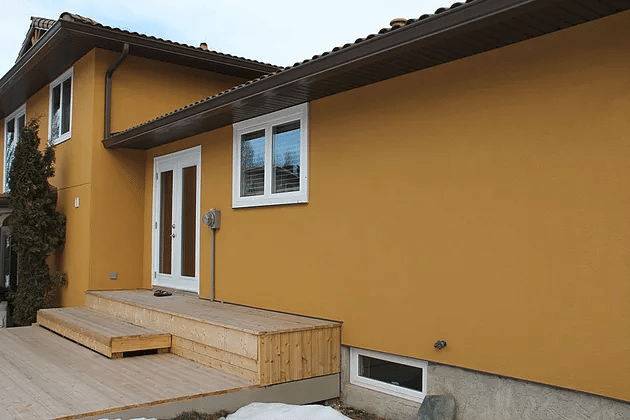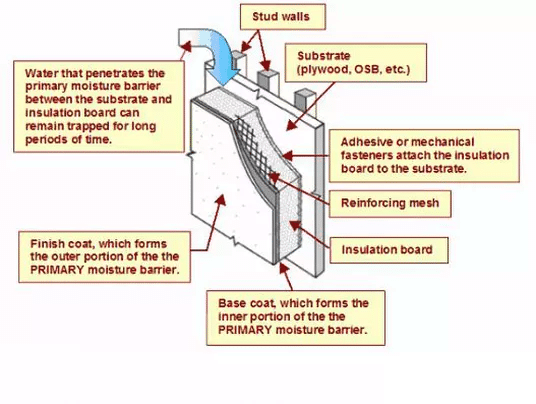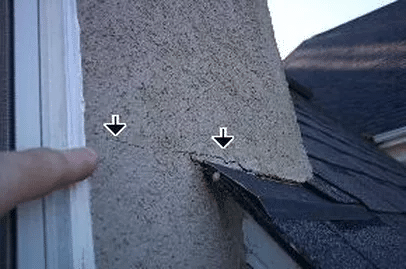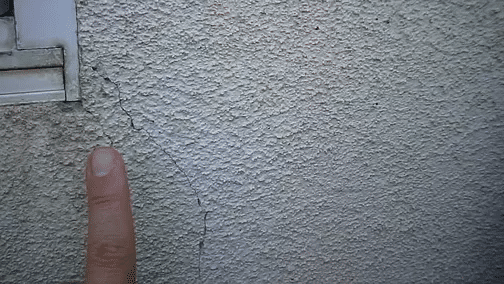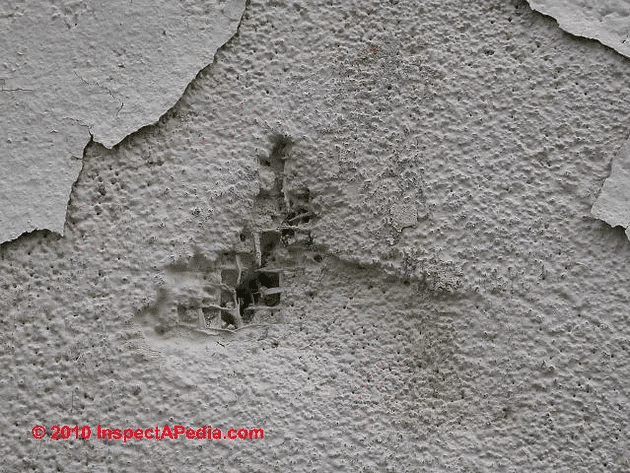Traditional Stucco or Exterior Insulation and Finish System (EFIS), also known as synthetic stucco or Dryvit, are becoming increasing popular. Although they are very similar in outward appearance, the construction of stucco vs. EFIS is very different.
This blog explains, at a very high level, the difference in construction methods and most common reasons why it would appear on a home inspection report as failing, needing improvement or further investigation required.
Stucco
Stucco is one of the oldest types of construction, dating back to 500 BCE in the times of Plato and Aristotle. The word “stucco” itself is Greek and means “no defeat”.
In 1824, Joseph Aspdin improved traditional stucco application process by creating and adding Portland cement to the plaster mix.
How it’s applied:
Traditional stucco is applied by attaching a wire mesh to the external walls. A base coat or scratch coast of plaster is applied and successive coats are added until the desired thickness is reached. The final or finish coat may have primer added to prepare for paint.
Exterior Insulation and Finish System (EFIS)
EFIS was invented in Europe and used to rebuild and repair commercial and residential buildings after WW2. Early EFIS applications had issues until a polymeric (plastic) was added to the application.
The company that originally created EFIS is out of business. Other companies have cloned and modified their process which continues to be commonly referred to as EFIS.
EFIS was designed to be the perfect barrier system. Water could not penetrate in or out. Unfortunately, imperfections due to improper installation, external damage to structure, etc. allows water to get in. Once in, the water cannot get out resulting in mold and/or wood rot in the external structure of the home.
The primary difference between EFIS and stucco is that EFIS attached a foam board to the outside sheathing and a fiberglass mess is installed before applying the plaster. Traditional stucco applications do not use a foam board.
You can tell if a house uses EFIS by lightly pressing against the exterior wall with your thumb at several places. If the wall has a sponginess and give to it, then it is probably using EFIS system.
How it’s applied:
EFIS is created by installing foam boards from ¾ inch to 4 inch thickness to the external walls of the house using specially designed adhesives and fasteners. A fiberglass reinforced mesh is installed on top of the foam boards and sanded to ensure the foam boards are level and smooth. Successive layers of plaster and texture are then applied. The final process is to apply sealant to all the joints where the EFIS boards meet another material.
Manufacturer’s warranty requires the manufacturer’s installation steps to be strictly followed. Lack of training and human error are the major reasons why EFIS systems fail.
Common EFIS Issues
- Improper construction. Manufacturer’s instructions must be strictly followed.
- Joints are not properly sealed allowing water penetration.
- Flashing are incorrectly installed or missing.
- Base coat thickness is too thin to prevent water penetration.
- Base coat thickness does not cover the reinforcing mesh.
- Aesthetic joins (V-grooves) that align with insulation board joints can lead to cracks as the building moves. Mesh reinforced base coat should be continuous at recessed features.
- Window and door corners should not align with insulation board joints.
- Expansion joints are neglected or missing.
- Insulation board should not bridge expansion joints in masonry or concrete substances.
- OSB and gypsum boards should not be used unless approved by the manufacturer.
- Climate Factors – a humid climate with limited drying potential can devastate some EFIS assemblies. Poor design and installation can exacerbate this problem. The amount of rain that is deposited on rain is influenced by the architectural design and the siting of the structure. Cold climates can also result in premature failure.
- Impact damage can result when anything hits the house (baseball, branches, etc.) Areas needing impact protection should use a heavier reinforcement mesh.
- Building Movement. In addition to foundation movement, buildings tend to move as the wood construction materials expand and contract due to temperature and humidity changes. The movement of wood structure supporting EFIS can result opening small fissures or cracks which will allow water penetration.
Common Home Inspection Issues
- Home inspectors are not able to inspect stucco or EFIS by removing the outer surface coats to examine the underlying structure. Home inspectors are limited to a visual examination of the exterior surface only. The inspector should determine whether the application is stucco or EFIS like system by pressing lightly against the external wall structure. If there is a give, it is likely an EFIS.
- The wall is beginning to separate from the structure of the home. This can be due improper installation, excessive moisture causing the stucco to lose its “grip” on the underlying structure. (This can also happen to brick exteriors and is not unique to stucco or EFIS).
- Extensive cracking is usually caused by foundation settlement; but it could be caused by improper installation of stucco or EFIS or lack of maintenance.
- Shrinkage cracks are usually cosmetic in nature and easily repaired. All cracks should be sealed or plastered to prevent water penetration.
- Separation of the bottom drip edge from the plaster is due to excessive moisture causing the plate to rust separate from the stucco or EFIS application. Rusting of the drip edge is not uncommon and may require replacement of the bottom drip edge.
- Efflorescence is mineral deposits left after water evaporates. These are indicators of water retention which could cause structural damage if not addressed.
- Holes in the plaster allow for water and insect penetration and should be filled with a sealer.
- Peeling paint is cosmetic in nature and not a structural concern on stucco. On EFIS the paint provided an additional layer of sealant that will need to be corrected.
Examples:
Horizontal crack could allow water penetration behind the stucco application.
Shrinkage cracks in stucco.
Spalling and moisture penetration creates substantial entryway for water and potential damage to support structure of the home.
Sources:





